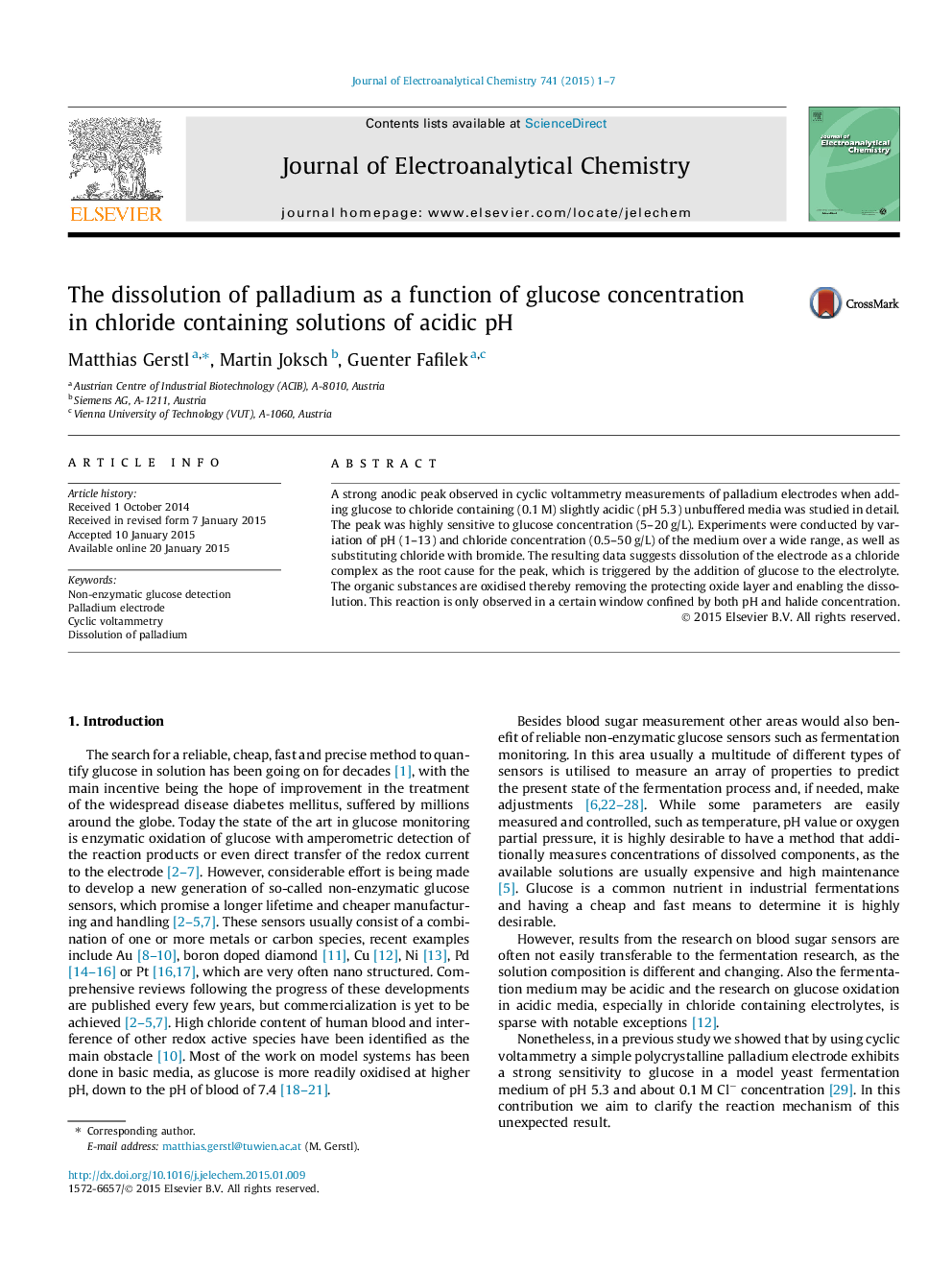| Article ID | Journal | Published Year | Pages | File Type |
|---|---|---|---|---|
| 218483 | Journal of Electroanalytical Chemistry | 2015 | 7 Pages |
•Cyclic voltammetry of Pd electrodes show a strong anodic peak linked to glucose.•This peak is only seen in chloride containing media in a certain acidic pH range.•A mechanism comprising of Pd oxidation and dissolution is proposed.
A strong anodic peak observed in cyclic voltammetry measurements of palladium electrodes when adding glucose to chloride containing (0.1 M) slightly acidic (pH 5.3) unbuffered media was studied in detail. The peak was highly sensitive to glucose concentration (5–20 g/L). Experiments were conducted by variation of pH (1–13) and chloride concentration (0.5–50 g/L) of the medium over a wide range, as well as substituting chloride with bromide. The resulting data suggests dissolution of the electrode as a chloride complex as the root cause for the peak, which is triggered by the addition of glucose to the electrolyte. The organic substances are oxidised thereby removing the protecting oxide layer and enabling the dissolution. This reaction is only observed in a certain window confined by both pH and halide concentration.
